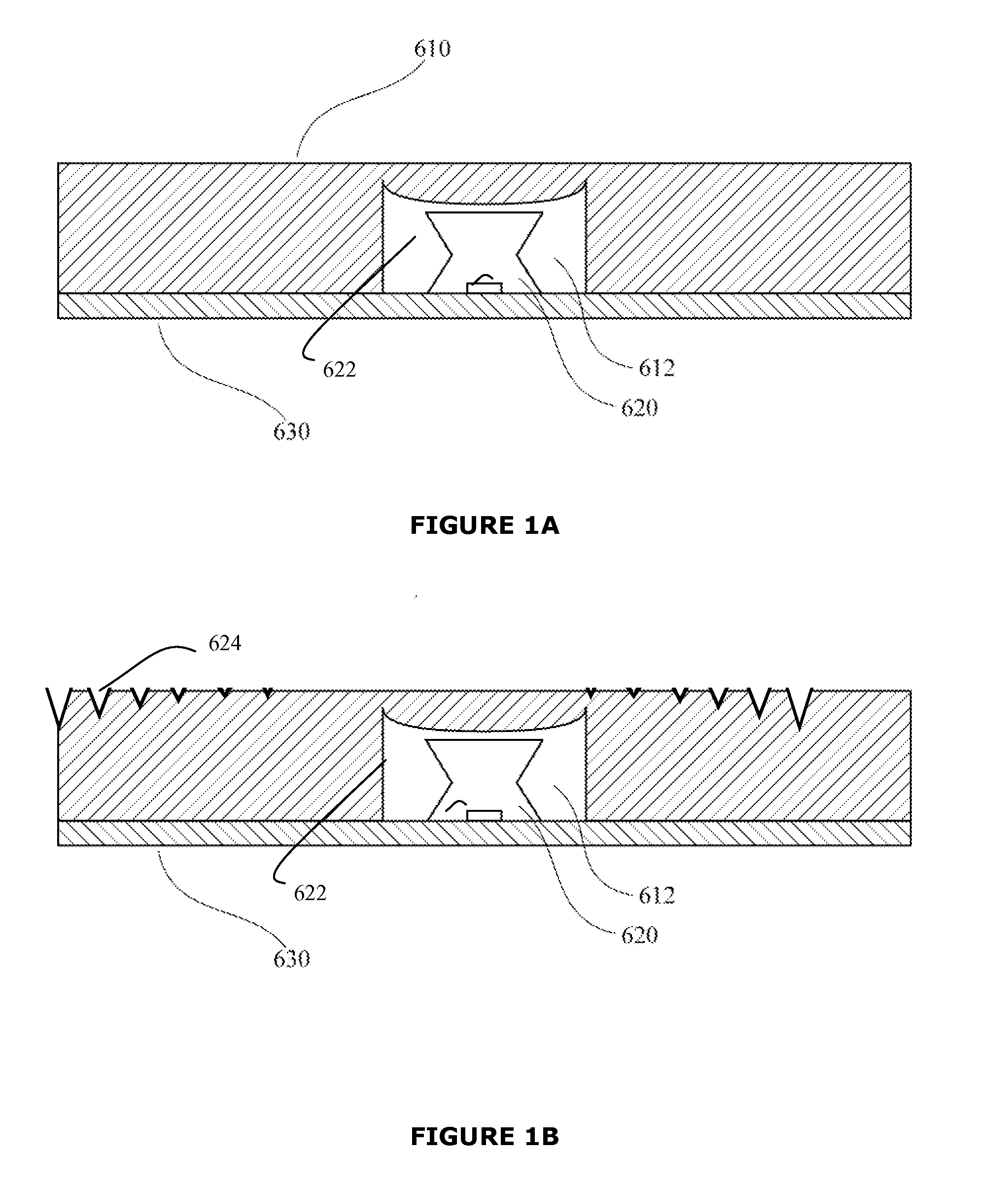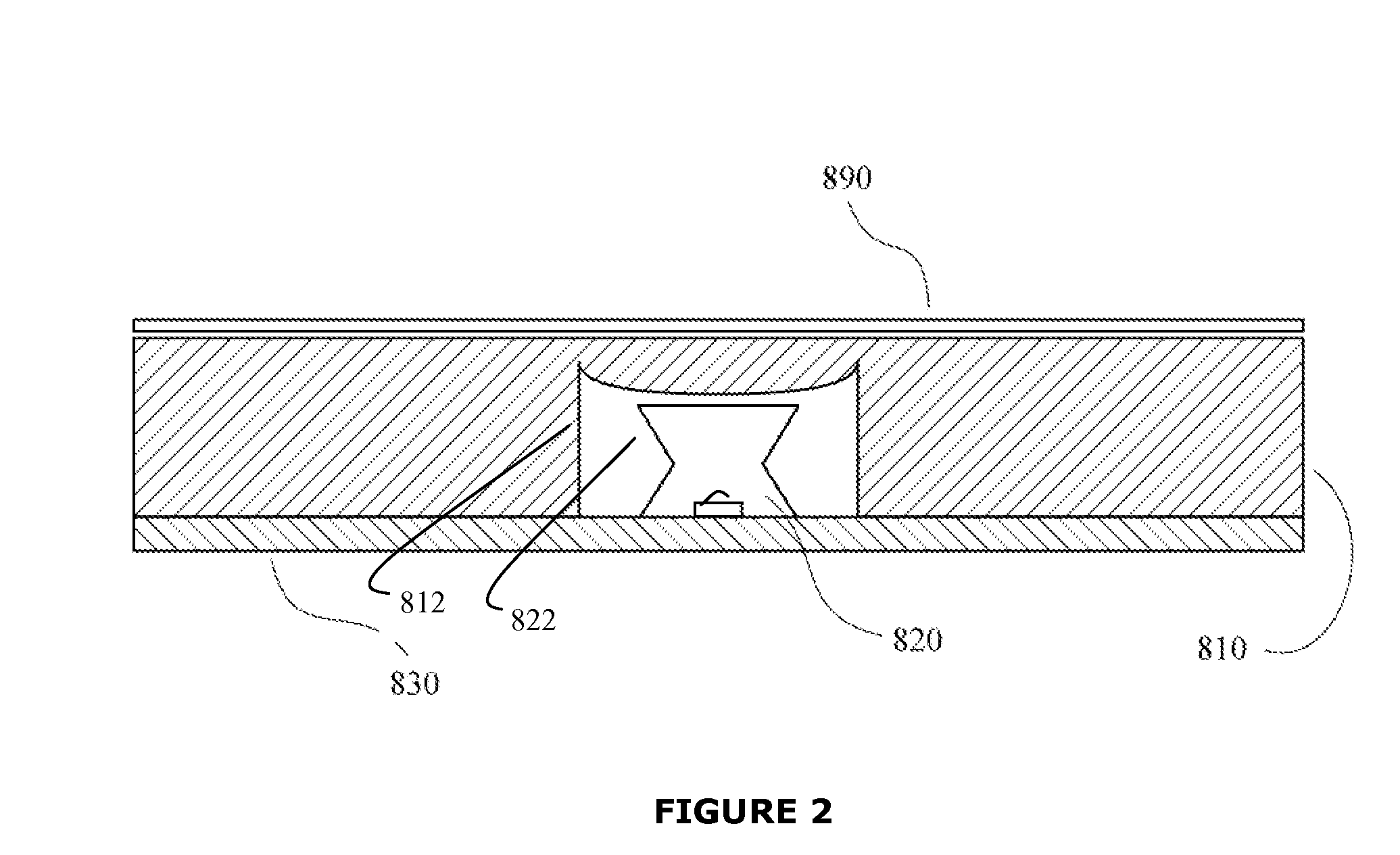Lighting system for creating an illuminated surface
a technology of illumination system and illumination surface, which is applied in the field of illumination system, can solve the problems of inability to compensate effects, inability to use edge lighting, and inability to provide edge lighting, so as to achieve uniform illumination effect, the effect of limiting the maximum panel size of the edge lighting
- Summary
- Abstract
- Description
- Claims
- Application Information
AI Technical Summary
Benefits of technology
Problems solved by technology
Method used
Image
Examples
examples
[0056]FIG. 1A illustrates an elevational cross section of an embodiment of the lighting system according to the present invention. The lighting system comprises a light-transmissive sheet or light guide 610 which defines a hole 612. In addition, the lighting system comprises a side light-emitting element 620 positioned within the hole in order to substantially maximize light extraction into the light-transmissive sheet. The light-emitting element 620 is affixed to a substrate 630 which provides traces and pathways for the supply of electronic signals and power to the light-emitting element. The traces and pathways are not illustrated. A primary optic 622 is optically coupled to the light-emitting element 620 enabling the redirection of the light sideways. The light redirecting elements can be formed between the light-transmissive sheet and the substrate (not shown) or can be formed on the top of the light-transmissive sheet as illustrated in FIG. 1B. In one embodiment, the light red...
PUM
 Login to View More
Login to View More Abstract
Description
Claims
Application Information
 Login to View More
Login to View More - R&D
- Intellectual Property
- Life Sciences
- Materials
- Tech Scout
- Unparalleled Data Quality
- Higher Quality Content
- 60% Fewer Hallucinations
Browse by: Latest US Patents, China's latest patents, Technical Efficacy Thesaurus, Application Domain, Technology Topic, Popular Technical Reports.
© 2025 PatSnap. All rights reserved.Legal|Privacy policy|Modern Slavery Act Transparency Statement|Sitemap|About US| Contact US: help@patsnap.com



